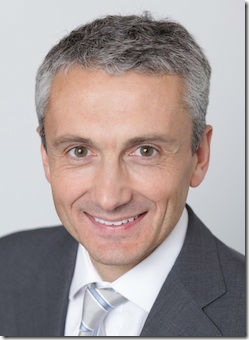Q: Why did you decide to join RIM?
A: Because the company has a great product, 78 million users, solid finances, and I enjoy a challenge.
Q: Did you approach RIM, or did RIM approach you?
A: They approached me. I was already planning to leave Lightsquared (a U.S.-based telecommunications company) because they weren’t going to be allowed to use the network they’d set up, so there was really nothing to market. I had other offers, in the telecommunication carrier and technology industries.
Q: What’s your biggest priority right now?
A: Making sure BB10 has a successful launch.
Q: Didn’t the delay in BB10’s launch hurt?
A: Actually, purely from a marketing point of view, I’d rather launch during January than during the pre-holiday season. Before Christmas, it’s so busy, it’s not the best time of year to get retail staff to stop and explain a completely new product. It’s easy to get lost in all the noise.
Q: What aspect of RIM’s marketing has been a problem, and is it something you’d like to take a different approach to?
A: There hasn’t been a consistent thought or identity in all of our commercials. We are going to market BB10 in a much more unified way. The people who it’s aimed at have the same values and needs all around the world. Obviously, there will need to be some small differences in the advertising in each market, but the general theme will be the same.
Q: When you joined RIM, what did you notice or discover about the BlackBerry brand?
A: The brand seems to be fragmented, from a perception point of view. One extreme is the U.S. The other is South Africa, where we’re No. 1.
Q: What are the biggest assets RIM has, from a marketing perspective?
A: A great product, and 78 million users.
Q: What’s the biggest single challenge RIM faces, from a marketing perspective?
A: That we’ve got formidable competitors. There are a lot of other companies in the market, and this is a market we created. In my carrier days, there was one option—BlackBerry. Now, there are a lot.
Q: How can you help turn the BlackBerry’s image around?
A: Word of mouth spreads a lot quicker these days, thanks to the Internet. If someone has a great user experience, they have a lot of ways to share that quickly.
Q: But doesn’t that cut both ways?
A: Absolutely. And that’s why the launch of BB10 was delayed. We need to get it right.
Q: How do you make sure telecommunications carriers and their retail staff push BlackBerry to their customers, given that many people may be coming in and asking for an iPhone or an Android?
A: Carriers don’t want to be in a position where there’s a monopoly, or a duopoly. So they already have a motivation. And also, they’ve had a preview of BB10, and they really, really like it. One of the first things that I did before I even took the job was to call up people that I know at the carriers and ask them what they thought. If the carriers weren’t onside, it would be a much bigger challenge than it already is.
 Junior Member
Junior Member






 Trả lời kèm Trích dẫn
Trả lời kèm Trích dẫn





Có những bí hiểm không cần phải nói ra, chỉ cần cảm nhận bằng từng nhịp rung khẽ, từng hơi thở đứt quãng giữa cơn mê. Lovense Lush – món quà của công nghệ đương đại, nhưng ẩn sau lớp vỏ tinh xảo ấy...
Siêu phẩm Lush 2 – Khi tình yêu...